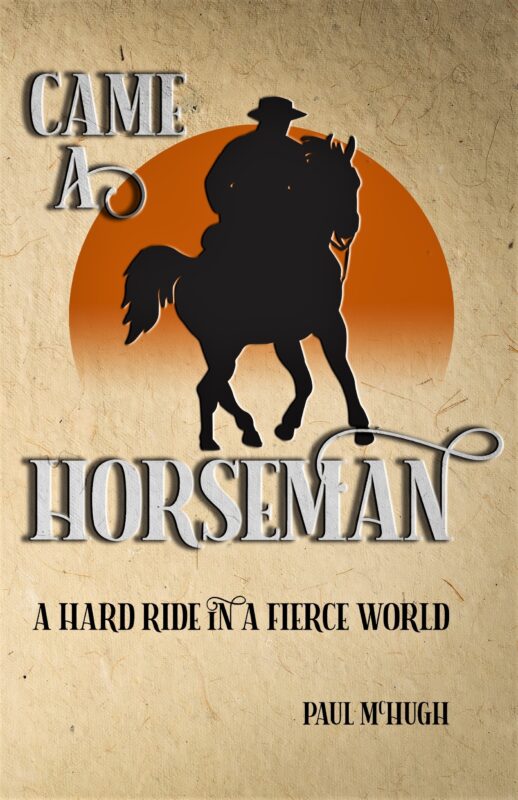San Francisco Chronicle
California North Coast Series
By Paul McHugh, Outdoors Writer
September 17
When you go to a place and want to truly understand, it’s good to speak with folks who’ve been living there for quite a while. In the case of Humboldt Bay, you can’t do better than visiting with a few surviving members of the Wiyot Tribe.
After another gale forced a break in our sea kayak voyage from Oregon to San Francisco. I, Bo Barnes and John Weed had to stay holed up for almost four days on Woodley Island, in the Port of Eureka.
 On one of those afternoons, we met up with Cheryl Seidner and her sister Leona Wilkinson of the Wiyots. No one is known to have dwelt in the Humboldt Bay region longer than their tribe.
“We have been here in Humboldt Bay for about 10,000 years,” Wilkinson said, as she led us out to a sacred site on Indian Island, just offshore from Eureka. “Evidence takes us back at least 8,000 years.”
During the last 200 years of that vast history, the trail turned rough for the Wiyots. Recently, their path has begun to smooth and straighten once more.
On earlier research trips to the North Coast, I met with Marnie Atkins, the tribe’s cultural director, and Seidner, tribal chairwoman. They spoke of the tragic past of the place now called Indian Island. Wiyots knew it as their sacred village of Tuluwat.
This low bay island near the city of Eureka had been center of the Wiyot universe. But during this tribe’s world-renewal ceremony in 1860, it became scene of a brutal massacre by a gang of settlers.
After, Tuluwat vanished under the piers, ways and structures of an industrial boatyard. Now, this place has been taken back into hands of the Wiyots. They are dismantling dilapidated structures and cleansing the land. They intend that a dance house once again will arise here.
After a silence of 150 years, Wiyot singing will echo again over waters of Humboldt Bay.
On one of those afternoons, we met up with Cheryl Seidner and her sister Leona Wilkinson of the Wiyots. No one is known to have dwelt in the Humboldt Bay region longer than their tribe.
“We have been here in Humboldt Bay for about 10,000 years,” Wilkinson said, as she led us out to a sacred site on Indian Island, just offshore from Eureka. “Evidence takes us back at least 8,000 years.”
During the last 200 years of that vast history, the trail turned rough for the Wiyots. Recently, their path has begun to smooth and straighten once more.
On earlier research trips to the North Coast, I met with Marnie Atkins, the tribe’s cultural director, and Seidner, tribal chairwoman. They spoke of the tragic past of the place now called Indian Island. Wiyots knew it as their sacred village of Tuluwat.
This low bay island near the city of Eureka had been center of the Wiyot universe. But during this tribe’s world-renewal ceremony in 1860, it became scene of a brutal massacre by a gang of settlers.
After, Tuluwat vanished under the piers, ways and structures of an industrial boatyard. Now, this place has been taken back into hands of the Wiyots. They are dismantling dilapidated structures and cleansing the land. They intend that a dance house once again will arise here.
After a silence of 150 years, Wiyot singing will echo again over waters of Humboldt Bay.
 “I like to stand out here sometimes, and imagine this all without the city lights,” Wilkinson said. “I think of how it was, with all those dugout canoes coming over the bay, people dressed in their finest as they arrived for ceremonies.”
The first two settler massacres of the Wiyot took place in 1852 and 1858. Next, early on the morning of February 26, 1860, a locally infamous brute (allegedly named Larrabee) and a few confederates rowed out to the island to attack the Wiyots with hatchets, clubs and knives. They didn’t want gunfire to arouse sleeping Eureka citizens. Victims were mainly women and children; Wiyot men were away gathering food and supplies to bring to the festival. Two other villages, on the Eel River and on the bay’s south spit, were also attacked at that very same day
Tuluwat had been sold out from under the Wiyots. A man named Gunther had “bought” it, from someone, just a few days earlier.
The Wiyots, never all that many to begin with, plummeted in numbers, along with their health and fortunes. By the end of 1860, there were less than 200 full-blooded Wiyot left; by 1910, fewer than 100. The last fluent speaker of the language died in 1962. Surviving tribal people were herded to Fort Humboldt, then off to distant reservations.
Yet always and in all ways, they sought to return home. The last corner available to them was Table Bluff, at the south end of the bay. Presently, there is a small reservation of 88 acres, and 465 people on tribal rolls.
“I like to stand out here sometimes, and imagine this all without the city lights,” Wilkinson said. “I think of how it was, with all those dugout canoes coming over the bay, people dressed in their finest as they arrived for ceremonies.”
The first two settler massacres of the Wiyot took place in 1852 and 1858. Next, early on the morning of February 26, 1860, a locally infamous brute (allegedly named Larrabee) and a few confederates rowed out to the island to attack the Wiyots with hatchets, clubs and knives. They didn’t want gunfire to arouse sleeping Eureka citizens. Victims were mainly women and children; Wiyot men were away gathering food and supplies to bring to the festival. Two other villages, on the Eel River and on the bay’s south spit, were also attacked at that very same day
Tuluwat had been sold out from under the Wiyots. A man named Gunther had “bought” it, from someone, just a few days earlier.
The Wiyots, never all that many to begin with, plummeted in numbers, along with their health and fortunes. By the end of 1860, there were less than 200 full-blooded Wiyot left; by 1910, fewer than 100. The last fluent speaker of the language died in 1962. Surviving tribal people were herded to Fort Humboldt, then off to distant reservations.
Yet always and in all ways, they sought to return home. The last corner available to them was Table Bluff, at the south end of the bay. Presently, there is a small reservation of 88 acres, and 465 people on tribal rolls.

Wiyot tribal chairwoman Cheryl Seidner and her sister, Leona Wilkinson. Photo by Michael Maloney, S.F. Chronicle.
Survivors of a Massacre
“One baby survived the killing on that day,” tribal chairwoman Seidner told me. “After the massacre, people of Eureka went out there. They found an old woman out on a mudflat, singing a mourning song. They found a little girl, a toddler, still alive. And under the body of a dead woman, they found a live baby, still attempting to nurse. That infant boy was the son of the headman, called Captain Jim, so he was named Jerry James. “Jerry James was my mother’s grandfather.” Seidner, 55, is a woman with flowing dark hair, a broad face, warm and lively eyes, and a direct, forthright manner. She’s held the tribal chair for five two-year terms, and over the course of her tenure, regaining a tribal presence on the so-called Indian Island has been a major order of business. “Here’s what I want to do,” Seidner explained. “Achieve major economic development. Finish this island project. See our language revive. And I want to bring back the dancing.”The Sacred Island of Tuluwat
In June 2004, wearing a white deerskin cape and traditional necklaces, Seidner sat in a redwood dugout canoe paddled near Tuluwat by boatmen descended from Wiyot, Yurok, Hupa, Maidu and Pit River bloodlines. In a ceremony, they took possession of 67 acres transferred to the tribe a month earlier by the Eureka city council’s unanimous vote. That land added to 1.5 acres of pivotal ground, bought from the boatyard owners by the tribe for $106,000 in 2000. “When we paddled away from the island, I thought, ‘Wow. We did it!’ I knew we could. Until that moment, I at times was not quite believing it.” Seidner said. Related by language and blood to the Yuroks of Klamath River country to the north, several thousand Wiyots once dwelt in a territory ranging from south of the Eel River (itself named “Wiyot”) north to the Mad River (“Batwat”). Central feature of the territory, of course was the bay (“Wiki”), which then sprawled over 27,000 acres (it’s smaller now, due to infill). Center of that center was Tuluwat. As Seidner watched us from the shoulder of highway 255 – which touches down on Indian Island on its way out to the Samoa Peninsula – Wilkinson led me, Barnes and Chronicle photographer Mike Maloney down a muddy path which very few are now permitted to traverse. Due to the hazardous waste and jagged trash at the boatyard, it’s considered too dangerous until cleanup is completed. “We’re almost done with that part,” Wilkinson said, as she stepped gingerly around jagged metal, oil-soaked earth, a marine railway for hauling out boats. Wilkinson resembles her younger sister in many ways, but her hair is gray, and her directness is tempered by a dignified reserve. “We had four barges of trash, each holding about three tons,” she said. “The previous owners had even piled up old engine batteries to make a seawall.” There’s one big metal shed left on the site, several rotting wooden shacks. They sit right atop a high, deep, wide shell mound or midden of shell fragments and Wiyot burial sites, the historic record of their long occupancy of the site. “Several (woven basketry) skull caps washed up during the cleanup,” Wilkinson said. “We’ll rebury those at an appropriate time.”To Restore a Ceremonial Site
We stood at the edge of the mound, where the Wiyots plan to vibrate metal sheets into the ground, to halt tidal erosion. On nearby mudflats, tawny sandpipers, willets and other shorebirds probed for dinner.
Leona Wilkinson on Tuluwat, formerly known as Indian Island. Photo by Michael Maloney, S.F. Chronicle.







